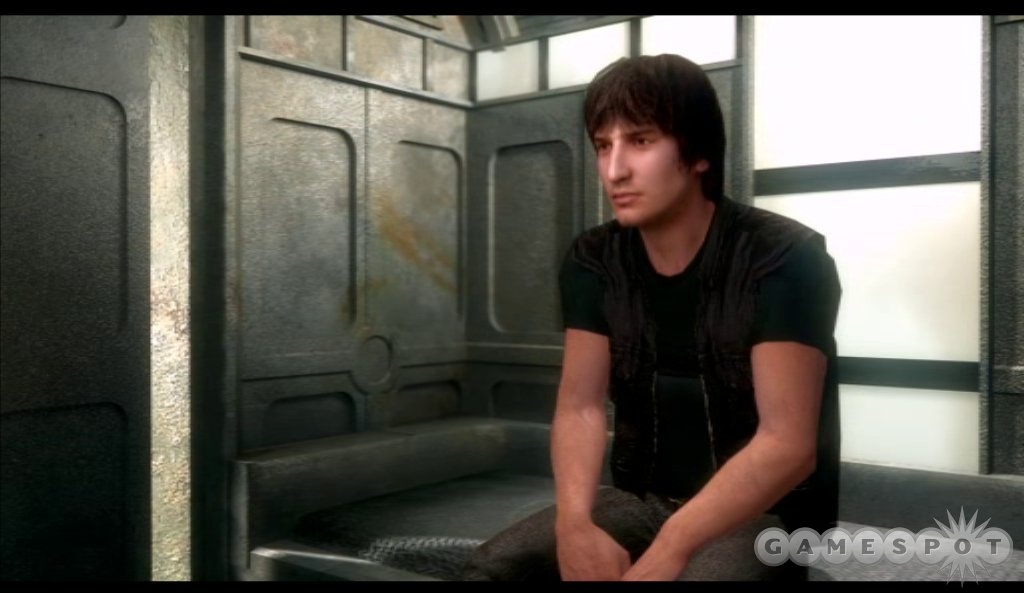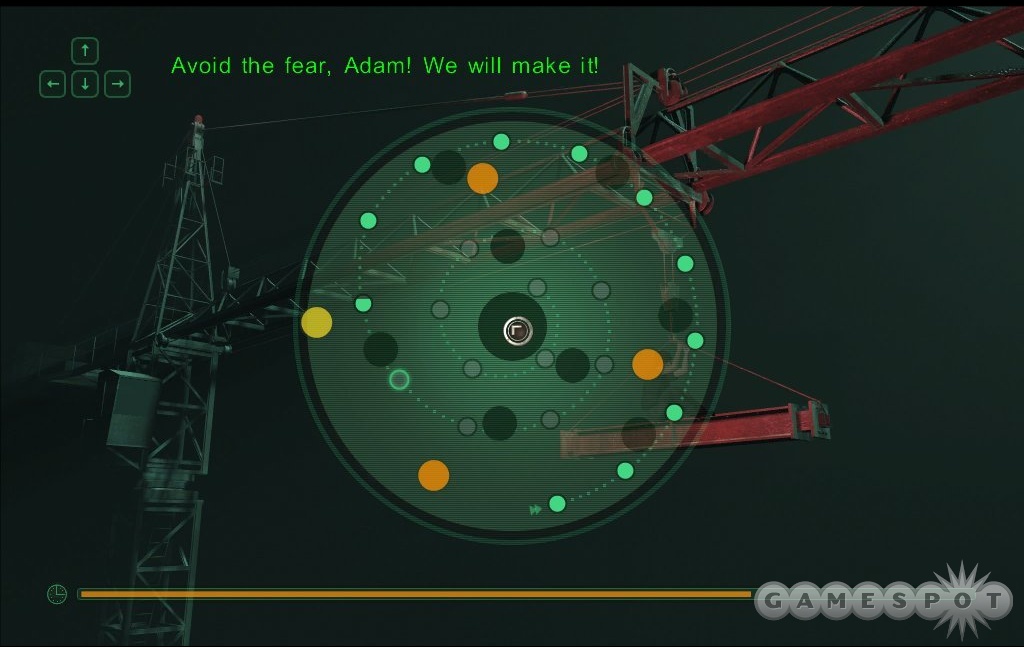Playing a lot of point-and-click adventures could prepare you for the afterlife if the premise of Next Life is accurate. However, let's hope that it isn't because this traditional adventure from Future Games wimps out when it comes to dealing with the "What happens after we die?" premise and also manages to almost bore you to death in the process. While you start off fascinated with the weird island on which you are marooned after the fiery death sequence that opens the proceedings, you soon find yourself trudging through a very slow, very unoriginal adventure-game scavenger hunt.

It's a shame that more isn't done with the story, a surreal tale about what happens to Adam Raichl after his SUV apparently plows into a tanker truck and goes boom one dark night. The young man from Prague doesn't wake up in a hospital or beside the pearly gates, however, but in a metal hut on a bleak island, imprisoned there with other recently deceased people who have lived all over the globe during different time periods. You're pretty much beaten over the head with the strangeness of it all as the people you meet immediately launch into talk about how much trouble Nixon is going to get into for Watergate, what it's like living under Brezhnev, and how work has been going lately at the World Trade Center. But the visuals are fantastic at conveying the loneliness of the setting and the grim facial features of your fellow castaways (you won't find much better character art in an adventure game), so the look of everything is more than enough to creep you out. Only the voice acting is a little flat, and it's off just enough to deepen the sense of strangeness. Thick European accents abound, giving the game an art-house ambiance that increases the dreamlike character of your surroundings.
Weirdness slowly fades as you get immersed in playing Next Life, though, and you quickly find yourself in just another adventure game. Traditional structure is the focus here, so you have to guide Adam on a walking tour where you engage in linear conversations, collect random scraps of garbage, and solve esoteric logic puzzles. Not that there's anything particularly wrong with all of this, as fill-in-the-blanks chats, scavenger hunts, and logic puzzles have been the foundation of adventures for a couple of decades now. But you can't help feeling let down here because the game trumpets a philosophical examination of life after death in the beginning but then collapses into gathering broken glass and wire like you're Sherlock Holmes in a junkyard.
The pace and overall fussiness of Next Life is also seriously aggravating. Much of the time you're not allowed to figure out what you need to do by checking out the landscape and the tools at hand. In the very beginning, for instance, it's elementary to deduce that the rocks, sticks, and dry grass you pick up should be used to make a fire to burn away a log wedging a rock in a cave opening. But you're not allowed to combine the objects in question unless you go back to your purgatory pals and get tips about starting a fire. You endure this sort of unnecessary backtracking throughout the entire game. One trip to a location is never good enough, and you often have to pick up numerous types of certain objects. Don't stop at picking up just one stick when Adam can carry three! The nightmare sections of the game also rely on confusing trial-and-error experimentation that can see you die dozens of times. The construction site and car-accident sequences are particularly crammed with tough problems that seem impossible to solve without fleeing to an online walkthrough.

Numerous little design flaws further emphasize the sleepy, frustrating nature of the game. Hot spots are often so tiny that you have to hunt for pixels to find exits (you can at least hit the "E" key to highlight these locations, but you shouldn't have to do this in every other scene). Key objects are also miniscule or shrouded in darkness to the point that some can't be seen on the screen at all. Extra pauses accompany all of your actions, during which your access to the cursor is locked out and you become a spectator. Whenever you direct Adam to move, he swivels slowly in place and takes a second or two to get going. Similar hesitations occur every time Adam opens his mouth: It's like he's always pausing to take a deep breath. There's a brief gap before he speaks and a brief gap after he finishes his thought. The same thing occurs when he comments on picking up an object. The whole game seems to be on a three-second time delay.
More profound treatments of the meaning of life can be found in fortune cookies than in Next Life. Still, even if the game cops out and doesn't address the thoughtful questions that it raises, it at least makes for a good sleep aid.